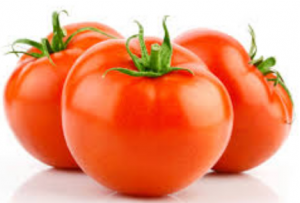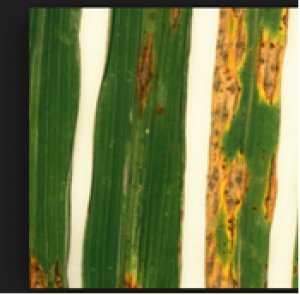Leaves, being the prime photosynthetic organ of plants, are critical in many ways to our current biosphere. A defining characteristic, which also optimizes their function, is their flat shape that depends on the correct patterning of their upper and lower tissues during development. Here, we show that the correct patterning of upper and lower leaf tissues depends on two types of transcription factors (class II and class III homeodomain leucine zipper (HD-ZIPs)
Quantitative Trait Loci (QTL) mapping is a powerful technique for dissecting the genetic basis of traits and species differences. Established tomato mapping populations between domesticated tomato (Solanum lycopersicum) and its more distant interfertile relatives typically follow a near isogenic line (NIL) design, such as the S. pennellii Introgression Line (IL) population, with a single wild introgression per line in an otherwise domesticated genetic background.
In plants, fruit maturation and oxidative stress can induce small heat shock protein (sHSP) synthesis to maintain cellular homeostasis. Although the tomato reference genome was published in 2012, the actual number and functionality of sHSP genes remain unknown. Using a transcriptomic (RNA-seq) and evolutionary genomic approach, putative sHSP genes in the Solanum lycopersicum (cv. Heinz 1706) genome were investigated.
Rice blast disease is emerging as a major constraint to rice production in Africa. Although a traditional gene-tagging strategy using biparental crosses can effectively identify resistance (R) genes or quantitative trait loci (QTL) against Magnaporthe oryzae, the mapping procedure required is time consuming and requires many populations to investigate the genetics of resistance. In this report, we conducted a genome-wide association study (GWAS) to rapidly map rice genes conferring resistance against eight M. oryzae isolates from four African countries.
Autophagy is a cellular degradation process that is highly evolutionarily-conserved in yeast, plants, and animals. In plants, autophagy plays important roles in regulating intracellular degradation and recycling of amino acids in response to nutrient starvation, senescence, and other environmental stresses. Foxtail millet (Setaria italica) has strong resistance to stresses and has been proposed as an ideal material for use in the study of the physiological mechanisms of abiotic stress tolerance in plants.
Box C (RUGAUGA)/D (CUGA) and H (ANANNA)/ACA small nucleolar RNAs (snoRNAs) are important for the modification and processing of rRNA during ribosome biogenesis in eukaryotes. However, the molecular role of snoRNAs throughout the multiple steps of pre-rRNA processing remains poorly understood.
Rising sea levels are threatening agricultural production in coastal regions due to inundation and contamination of groundwater. The development of more salt-tolerant crops is essential. Cassava is an important staple, particularly among poor subsistence farmers. Its tolerance to drought and elevated temperatures make it highly suitable for meeting global food demands in the face of climate change, but its ability to tolerate salt is unknown.
The bZIP transcription factor (TF) act as an important regulator for the abscisic acid (ABA) mediated abiotic stresses signaling pathways in plants. Here, we reported the cloning and characterization of GhABF2, encoding for typical cotton bZIP TF. Overexpression of GhABF2 significantly improved drought and salt stress tolerance both in Arabidopsis and cotton. However, silencing of GhABF2 made transgenic cotton sensitive to PEG osmotic and salt stress.
Lipopeptides are known as promising microbial surfactants and have been successfully used in enhancing oil recovery in extreme environmental conditions. A biosurfactant-producing strain, Bacillus atrophaeus 5-2a, was recently isolated from an oil-contaminated soil in the Ansai oilfield, Northwest China. In this study, we evaluated the crude oil removal efficiency of lipopeptide biosurfactants produced by B. atrophaeus 5-2a and their feasibility for use in microbial enhanced oil recovery.
Abiotic stresses have a significant impact on plant productivity and crop quality. Although plant lectins are thought to play important roles in plant defense signaling during pathogen attack, little is known about the contribution of plant lectins to stress resistance. We cloned and functionally characterized a rice jacalin-related mannose-binding lectin gene, OsJRL, from rice 'Nipponbare'.


 Curently online :
Curently online :
 Total visitors :
Total visitors :









